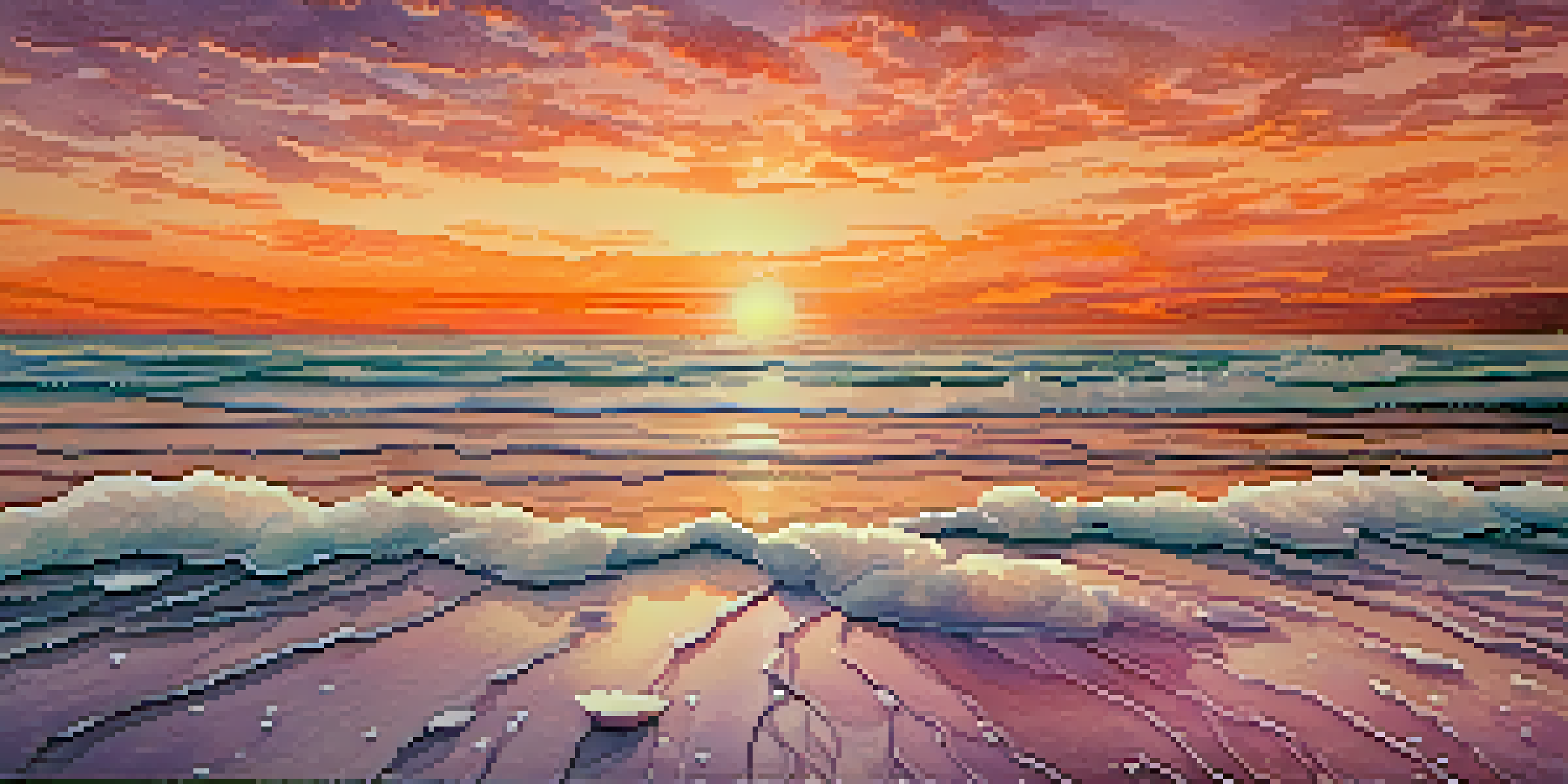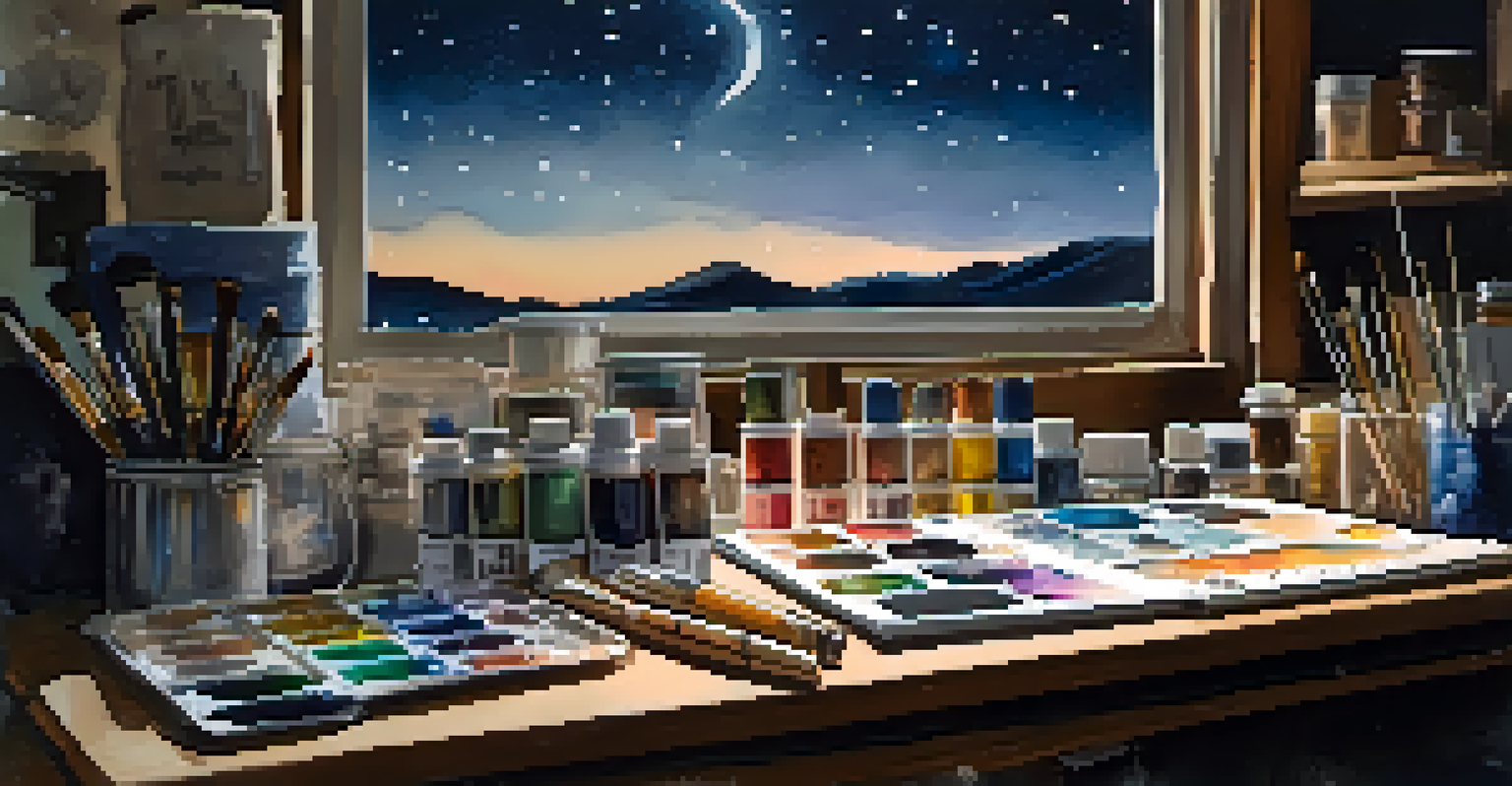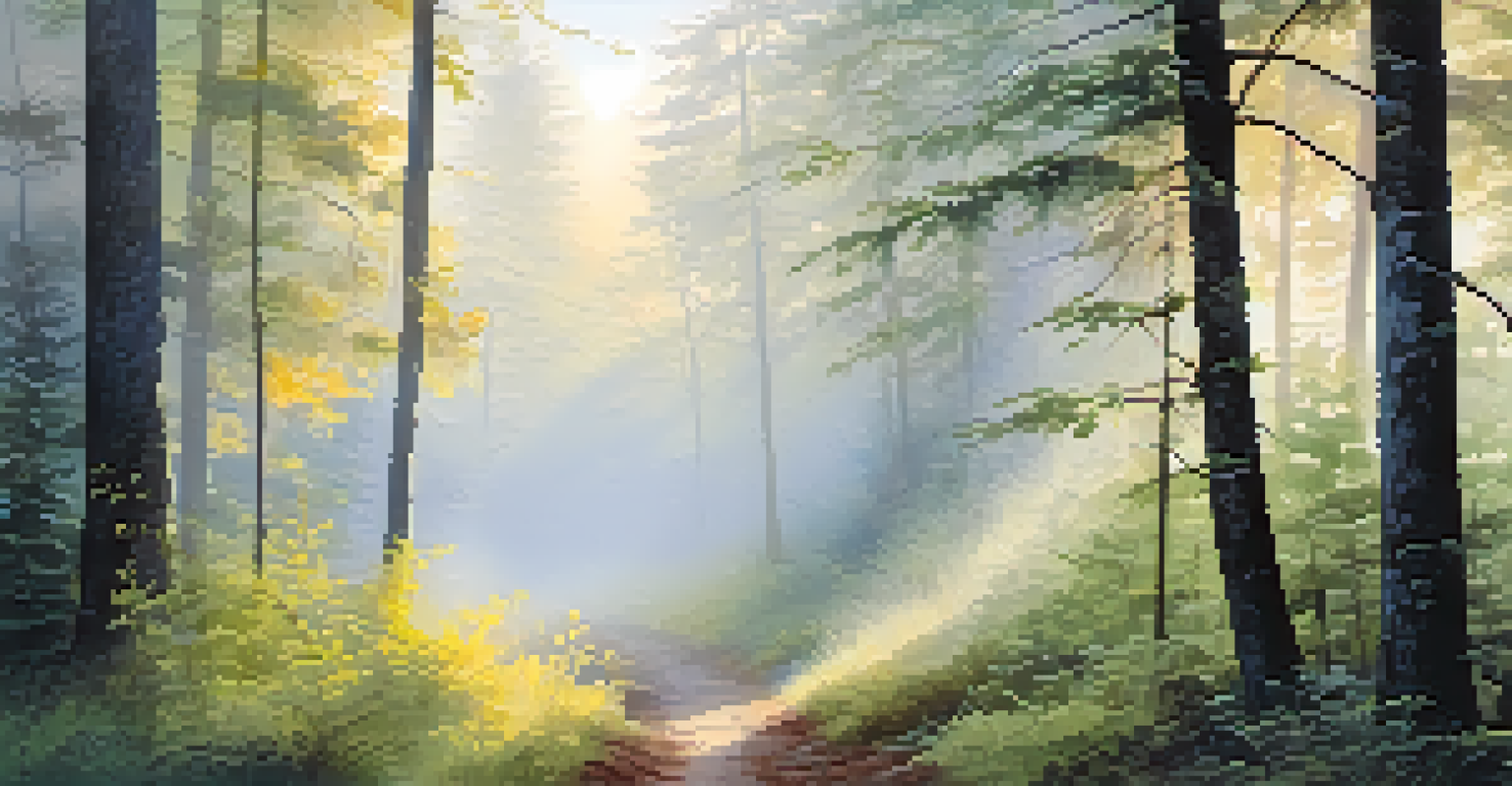Using Salt in Watercolor: Unique Textures and Effects

Understanding the Role of Salt in Watercolor
Salt has a fascinating ability to interact with watercolor paints, creating unique textures that can elevate your artwork. When salt is sprinkled onto wet paint, it absorbs water and pigment, leaving behind interesting patterns. This simple technique can add depth and complexity to your pieces, making them visually captivating.
Creativity takes courage.
The science behind this process is rooted in how salt crystals attract moisture. As the water evaporates, the salt pulls the pigment with it, resulting in a beautiful, speckled effect. Artists often use this technique to create backgrounds or add highlights without much effort, proving that sometimes less is more in art.
Using salt is not just about the final look; it also encourages experimentation. Whether you prefer coarse sea salt or fine table salt, each type yields different results, inviting you to explore and discover what works best for your style.
Types of Salt for Watercolor Techniques
Different types of salt can produce varying textures in your watercolor paintings. Coarse sea salt creates larger, more pronounced textures, while table salt leads to finer, delicate effects. Experimenting with these options can help you find the perfect match for your artistic vision.

If you want a more dramatic look, try using rock salt, which can create intriguing patterns due to its size and shape. On the other hand, Epsom salt can also be used creatively, as it dissolves differently and can create a softer texture in your work.
Salt Enhances Watercolor Textures
Sprinkling salt on wet watercolor paints creates unique textures and captivating patterns that add depth to your artwork.
Ultimately, the choice of salt will depend on the effect you wish to achieve. So don’t hesitate to try out various salts and see how they influence your watercolor compositions.
How to Apply Salt in Your Watercolor Process
Applying salt in watercolor is a straightforward process that can yield stunning results. Start by painting your desired area with wet watercolor paint, ensuring the surface is saturated. Then, simply sprinkle salt over the wet paint while it’s still damp to see the magic happen.
Every artist was first an amateur.
Letting the salt sit for a few minutes allows it to absorb the paint and moisture effectively. Once dry, you can gently brush off the salt to reveal the beautiful textures it has created. This technique is perfect for landscapes, abstract pieces, or any artwork that benefits from added depth.
One tip to keep in mind is to experiment with the amount of salt used. More salt can lead to bolder textures, while a light sprinkle can create subtler effects. Finding that balance can take your work from ordinary to extraordinary.
Combining Salt with Other Watercolor Techniques
Salt works beautifully alongside other watercolor techniques, allowing for a rich blend of textures and effects. For instance, combining salt with wet-on-wet or wet-on-dry techniques can enhance your artwork's complexity. Each method adds a layer of interest that draws the viewer's eye.
You can also layer different salt effects by applying one technique, allowing it to dry, and then adding another layer. This creates a multidimensional effect, reminiscent of natural landscapes or abstract designs. The key is to be patient and let each layer dry before proceeding.
Types of Salt Influence Art Effects
Different salts, like coarse sea salt and Epsom salt, can produce varying textures, inviting artists to experiment for desired results.
Mixing salt with splattering or masking techniques can also produce stunning results. The interplay of textures adds depth and intrigue, making your artwork more engaging and dynamic.
Creating Atmospheric Effects with Salt
Salt can be a powerful tool for creating atmospheric effects in your watercolor paintings. For example, when painting skies or oceans, adding salt while the paint is still wet can mimic the look of clouds or waves. These organic textures can bring your scenes to life and evoke a sense of movement.
Consider using salt to create a starry night sky by sprinkling it over a dark blue background. Once dry, the salt will leave behind a speckled effect, resembling stars twinkling in the night. This technique is not only fun but can be a great conversation starter about your creative process.
The beauty of using salt lies in its unpredictability. This spontaneity can lead to unexpected results that might surprise you and inspire new creative directions in your work.
Common Mistakes to Avoid with Salt in Watercolor
While using salt in watercolor can yield beautiful results, there are a few common mistakes to watch out for. One of the biggest pitfalls is using too much salt, which can overwhelm your painting and detract from the overall composition. A light hand is often more effective.
Another mistake is not allowing the paint to dry enough before removing the salt. If you pull it off too soon, you might disrupt the texture and lose the intended effect. Patience is key in this process; let the salt do its magic before you rush to reveal the results.
Common Mistakes with Salt Use
Avoid using too much salt and ensure proper drying time to maintain the intended effects in your watercolor paintings.
Lastly, remember to test your salt technique on scrap paper before applying it to your main piece. This practice allows you to gauge the effect and adjust your approach as needed, ensuring a successful outcome.
Inspiration from Artists Using Salt in Watercolor
Many artists have embraced the creative potential of salt in their watercolor work, often sharing their stunning results on social media platforms. For instance, watercolorists can create breathtaking landscapes that come alive with the textures produced by salt, showcasing their unique interpretations of nature.
Studying the works of these artists can spark your creativity and provide insights into how salt can enhance your own pieces. Look for tutorials or time-lapse videos that demonstrate their techniques, which can offer valuable tips and inspiration.

Moreover, participating in online art communities where artists share their salt techniques can lead to new friendships and collaborations. By connecting with others, you can exchange ideas and learn from each other’s experiences, enriching your own artistic journey.